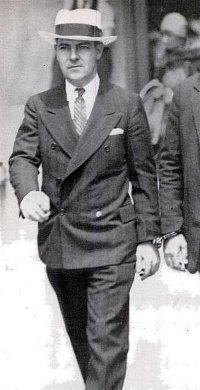
The world’s greatest jewel thief rarely carried a weapon and never indulged in violence, yet in the 1920s he managed to steal between $5 and $10 million from wealthy victims, whom he called “clients.”
Born in Massachusetts in 1896, Arthur Barry committed his first burglary at 15, creeping in through the window of a merchant’s home to plan the job and then returning to steal his receipts. The value of preparation struck him, and after a stint in the Army he went to New York and began his career in earnest. He would scan the society columns for a wedding party on Long Island, crash it wearing formal wear, then enter the house, wander upstairs, memorize the floor plan, and unlock windows. He’d return later to commit the robbery.
Working in this meticulous way he managed to steal half a million dollars a year in the mid-1920s, including $750,000 in jewels in broad daylight from the suite of F.W. Woolworth’s daughter. “Whoever took those pearls really knew what he was doing,” marveled a police captain at the time. “There were five ropes in the drawer, four imitations and the real one. The imitations were good enough to fool an oyster.”
Ironically, by the time Barry was finally caught and sent to prison in 1927, he had discovered that some of his victims were criminals themselves. “On the day after a job I’d read stories which listed all kinds of things I hadn’t stolen at all,” he told Life in 1956. “The clients would hide them and get the money from the insurance company. Sure, I was a thief and I’m sorry now, but you’ll find a lot of people in the Social Register who are also thieves and aren’t one bit sorry.”
